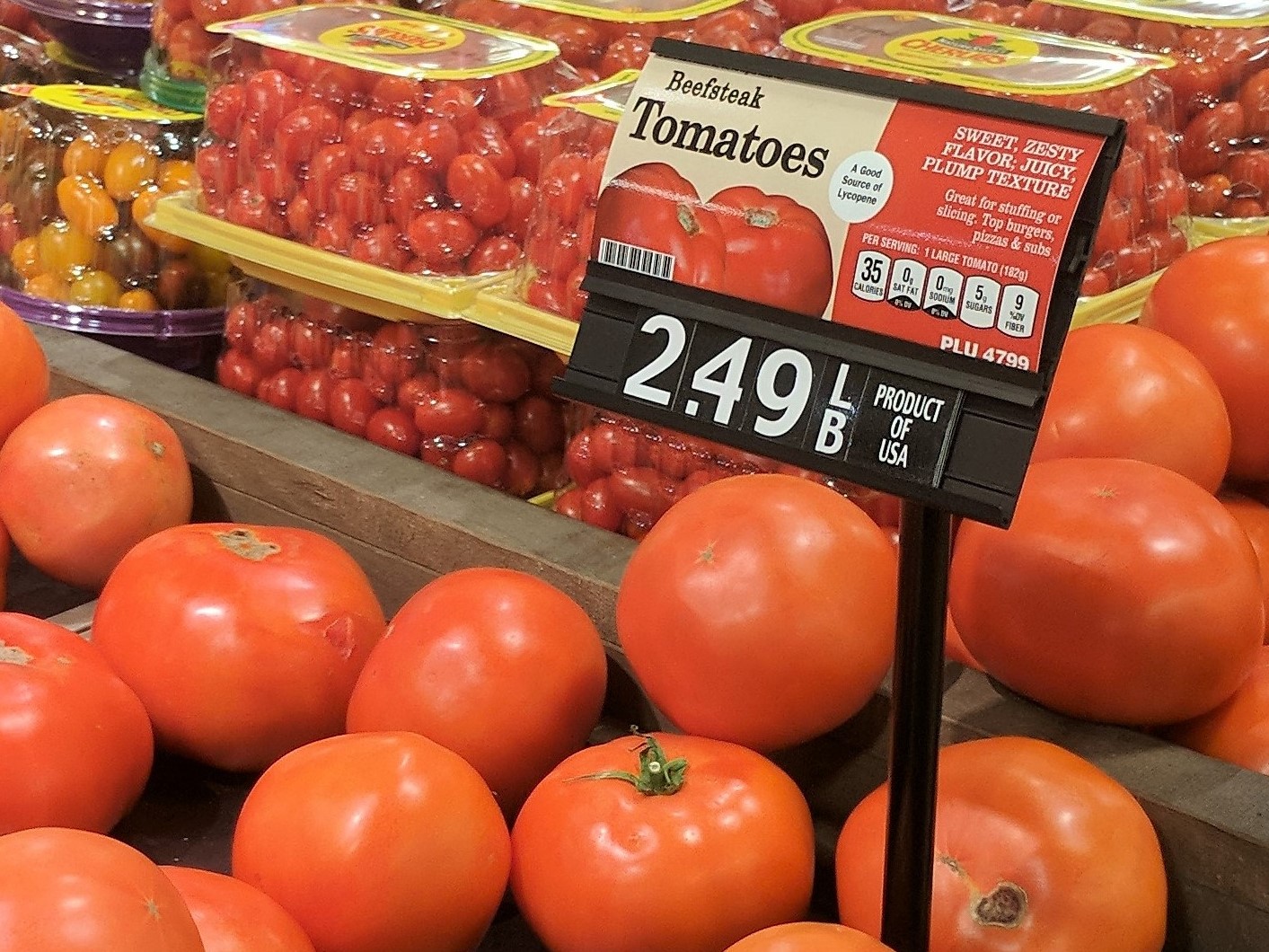Organic Labels: Behind the label
POSTED February 24, 2023
Organic labels on produce and products are a common sight in grocery stores today. These labels imply quality, safety, and purity, but what does it take for the little organic labels to be on the produce?
Farmers grow their products for stores and people all over the world. They use organic products to make sure weeds and animals stay away from their crops. They don’t use pesticides or other harmful chemicals for crops after they’ve grown. They go through the organic labeling process, but that doesn’t mean that all the organic products are organic. Some farmers use pesticides and other harmful chemicals, and still label their products as organic.
Mass Production Farming- “Is the large-scale, intensive production of crops and animals, often involving chemical fertilizers on crops or the routine, harmful use of antibiotics in animals. (as a way to compensate for filthy conditions, even when the animals aren’t sick). It may also involve crops that are genetically modified, heavy use of pesticides, and other practices that deplete the land, mistreat animals, and increase various forms of pollution.” according to the website: https://www.nrdc.org/stories/industrial-agriculture-101
Organic Farming- “”Organically grown” food is food grown and processed using no synthetic fertilizers or pesticides. Pesticides derived from natural sources (such as biological pesticides) may be used in producing organically grown food.” quoted from:
Here is the process for the organic labels:
“Organic products must be produced using Agricultural production practices that foster resource cycling, promote ecological balance, Maintain and improve soil and water quality, Minimize the use of pesticides, and Conserve biodiversity.” according to the USDA, But that doesn’t mean farmers have free range for organic products to be grown they have some rules and regulations to follow
According to the USDA “Produce can be called organic if it’s certified to have grown soil that has no substances that are prohibited applied for three years prior to harvest” and “ Prohibited substances include most synthetic fertilizers and pesticides.” https://www.usda.gov/media/blog/2012/03/22/organic-101-what-usda-organic
Now you may be asking yourself: Can a product be labeled organic, without being certified? It will be stopped by the USDA or the (U.S. The Department of Agriculture)
- “If you have a product and claim it is organic, that product needs to be certified to make sure it is”
- “If it isn’t certified you can not claim it as organic on the USDA Organic seal”
- “You may only, on the information panel, Identify the certified product ingredients as organic and the percentage of organic ingredients”
Now, don’t be alarmed and look up if what you are eating at this moment is organic? The internet wouldn’t know. Here is the labeling rules for organic products:
“-Cover wording is allowed -on both the front panel and the information panel of the packaged product.”
“- Principal display panel (PDP)-portion of the package most likely to be seen be the consumers at the purchase time”
“- Information Panel (IP)-includes ingredient statements (list of ingredients contained in a product, from highest to lowest percentage of final product) and other product information”
“Finally you might be screaming at this article asking what the heck do the four different labels mean? Here is what they mean:
“100% organic”-used to label products that are 100% organic ingredients not including: (Salt & water which are natural”
“Most raw, unprocessed or minimally processed farm crops can be labeled 100% organic”
“PDP:may include USDA organic seal and/or 100% Organic claim”
“IP: Identify organic ingredients (e.g., organic dill) or via asterisk or other mark
And then finally organic products:”
“Any product that contains a minimum of 95% organic ingredients Not include (Salt & Water)
Up to 5% of the ingredients may be nonorganic”
But still, here are some tips to make sure what you’re eating is organic:
-All organic products in the grocery store have a “9” in front of the number.
– Make sure you peel the skin of produce after you buy them (because there might be pesticides on the peel)
Tips from: https://www.foodnetwork.com/healthyeats/healthy-tips/2009/02/shopping-for-organic-foods
But it all comes down to one thing in the end and that is trust, you have to trust the grocery store to have the organic products and you have to trust the farmers to make sure that they grew their products organically.
Sources: https://www.ams.usda.gov/rules-regulations/organic/labeling
